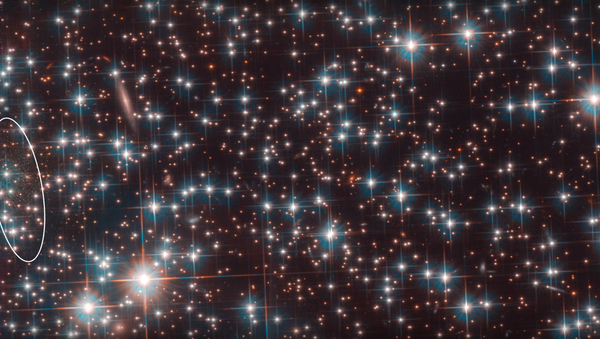Astronomers using the NASA/ESA Hubble Space Telescope have spotted an ancient galaxy "nearly as old as the Universe itself," Hubble's official website reported.
The "living fossil" galaxy, dubbed the Bedin 1 by astronomers, is elongated, faint, and small by galactic standards, just 3,000 light-years across at its greatest extent (by comparison, the Milky Way is approximately 100,000 light-years across).
Initially believing the Bedin 1 group of stars was part of a separate cluster belonging to the Milky Way, astronomers soon realised that it was in fact a separate galaxy millions more light years away than previously thought.
Based on the properties of its stars, including their low-luminosity, astronomers were able to calculate that Bedin 1 is between 10 and 13 billion years old. "Because of its isolation – which resulted in hardly any interaction with other galaxies – and its age, Bedin 1 is the astronautical equivalent of a living fossil from the early Universe," Hubble's website explained.
According to an academic paper published by Bedin and astronomers from Italy, the UK, Germany and the United States, the newly discovered galaxy consists mostly of red giants, and is located some 28.38 million light years from Earth, and at least 2.12 million light years from its neighbour, NGC 6744.


